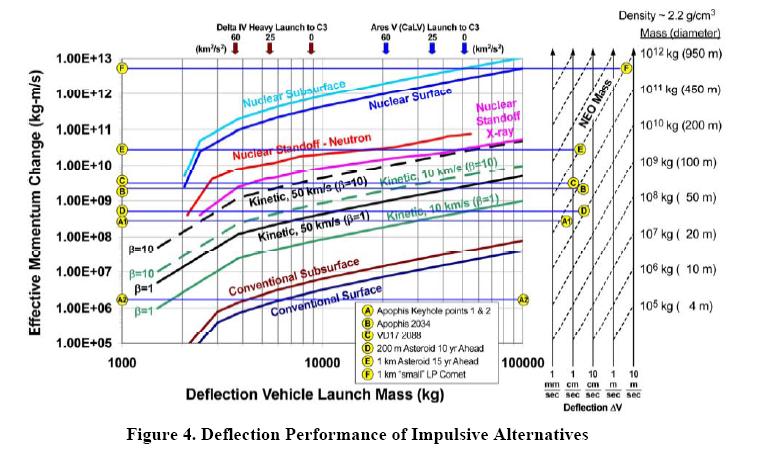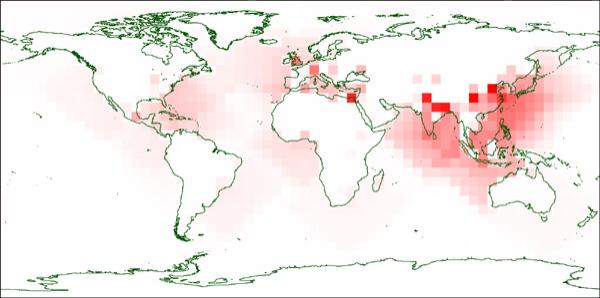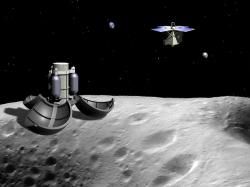The Ares V launch vehicle is scheduled to first fly in 2018. It would launch 130 tons to LEO.
I welcome this study for providing a clearer analysis of the deflection options and the analyzing costs of searching for threatening asteroids.
The 8.9m (29ft)-long “Cradle” spacecraft would carry six 1,500kg (3,300lb) missile-like interceptor vehicles that would carry one 1.2MT B83 nuclear warhead each, with a total mass of 11,035kg.
99942 Apophis is a near-Earth asteroid that caused a brief period of concern in December 2004 because initial observations indicated a relatively large probability that it would strike the Earth in 2029. It is 350 meters across and weighs about 46 million tons.
The study team assessed a series of approaches that could be used to divert a NEO potentially on a collision course with Earth. Nuclear explosives, as well as non-nuclear options, were assessed.
• Nuclear standoff explosions are assessed to be 10–100 times more effective than the non-nuclear alternatives analyzed in this study. Other techniques involving the surface or subsurface use of nuclear explosives may be more efficient, but they run an increased risk of fracturing the target NEO. They also carry higher development and operations risks.
• Non-nuclear kinetic impactors are the most mature approach and could be used in some deflection/mitigation scenarios, especially for NEOs that consist of a single small, solid body.
• “Slow push” mitigation techniques are the most expensive, have the lowest level of technical readiness, and their ability to both travel to and divert a threatening NEO would be limited unless mission durations of many years to decades are possible.
• 30–80 percent of potentially hazardous NEOs are in orbits that are beyond the capability of current or planned launch systems. Therefore, planetary gravity assist swingby trajectories or on-orbit assembly of modular propulsion systems may be needed to augment launch vehicle performance, if these objects need to be deflected.
This diagram shows that the nuclear options work better and can handle asteroids up to 950 meters in size
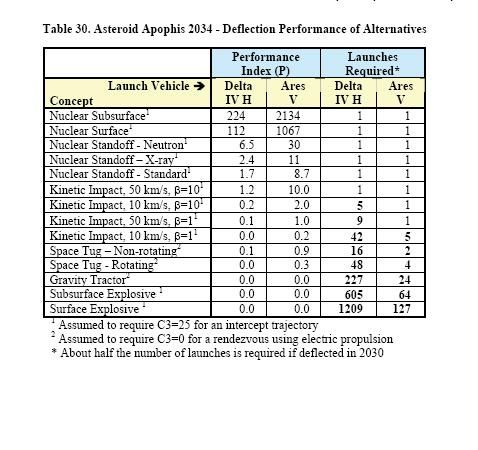
This is a table that shows that a performance index of 1 means a method was good enough to perform a successful deflection. Less than 1 means more launches are needed.
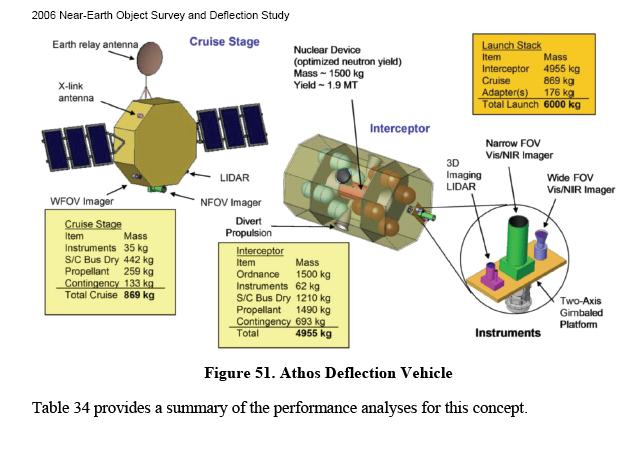
This is a drawing of the deflection vehicle
The Lifeboat foundation has the asteroid shield program
